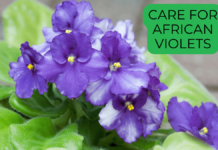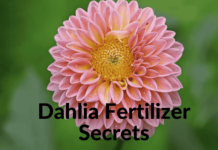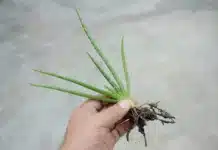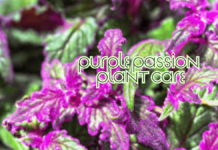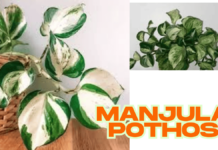Peonies have long captured the hearts of gardeners, florists, and flower lovers alike. Their large, ruffled blooms, rich history, and exceptional range of colors make them standout stars in any garden. But when it comes to understanding the different types of colour peony, there’s more than meets the eye. From deeply saturated crimsons to powdery pastels, peonies exhibit one of the most captivating color spectrums in the floral world. In this comprehensive guide, we’ll explore these hues and dive into the classifications, bloom forms, popular cultivars, and essential growing tips—so you can choose the right peonies for your backyard, cutting garden, or ornamental flower bed.
Personal Experience:
The first time I encountered a ‘Coral Charm’ Itoh hybrid, it was planted in a compact mound right outside a local botanical garden. The bloom began as a vivid coral pink and transitioned beautifully into a peachy yellow with a creamy center. Its upright stems, large flowers, and crepe-like petals made it impossible not to stop and admire. I’ve since planted it alongside ‘Shirley Temple’ and ‘Karl Rosenfield’ in my own cutting garden. Their different bloom periods extend the flower show from mid-spring into summer.
The Diversity of Peony Types and Colors
60kg Bearing Lamb Spit Roaster With Electric Motor GrillPeonies come in three major forms: herbaceous, tree (woody), and Itoh (intersectional hybrids). Each form has its own growth habit and offers a kaleidoscope of colors and flower forms, from single blooms to lush double blossoms.
Herbaceous Peonies like Paeonia lactiflora die back in the winter and re-emerge in spring. Their bloom period is typically mid-to-late spring. They thrive in USDA Zones 3-8 and are often used in cutting gardens for their long vase life and showy, fragrant flowers.
Tree Peonies (Paeonia suffruticosa) are deciduous sub-shrubs with woody stems that don’t die back in winter. They produce large, crepe paper-like blossoms with vivid color patterns—think purple flares, scarlet streaks, creamy yellow centers, and even blue overtones. Best suited for Zones 4-9, they bloom in mid-spring and are prized for their stunning, ornamental quality.
Itoh or Intersectional Hybrids (Paeonia cvs.) combine the best of herbaceous and tree peonies. These compact mound-forming plants boast sturdy upright stems, making them excellent for flower competitions and backyard gardening alike. They flourish in USDA Zones 3a-8a.
A Parade of Peony Colors
Let’s walk through the stunning variety of colour peony, one petal at a time.
 White Peonies: Classic and elegant, often with a creamy or yellow center. Popular cultivars include ‘Festiva Maxima’ and ‘Shirley Temple.’
White Peonies: Classic and elegant, often with a creamy or yellow center. Popular cultivars include ‘Festiva Maxima’ and ‘Shirley Temple.’
 Pink Peonies: Ranging from pale blush to hot magenta. Cultivars like ‘Minnie Shaylor’ and ‘Edulis Superba’ stand out.
Pink Peonies: Ranging from pale blush to hot magenta. Cultivars like ‘Minnie Shaylor’ and ‘Edulis Superba’ stand out.
 Red & Crimson Peonies: Bold and dramatic, including ‘Big Ben’ and ‘Karl Rosenfield,’ known for their rich hues and fragrant double blooms.
Red & Crimson Peonies: Bold and dramatic, including ‘Big Ben’ and ‘Karl Rosenfield,’ known for their rich hues and fragrant double blooms.
 Coral & Peachy Shades: Cultivars like ‘Coral Charm’ offer a transition color experience, starting deep coral and fading to peach or ivory.
Coral & Peachy Shades: Cultivars like ‘Coral Charm’ offer a transition color experience, starting deep coral and fading to peach or ivory.
 Yellow Peonies: Rare but striking, often found in Itoh hybrids. They offer a golden center or full bright bloom, with excellent heat resistance.
Yellow Peonies: Rare but striking, often found in Itoh hybrids. They offer a golden center or full bright bloom, with excellent heat resistance.
 Lavender, Purple & Blue Tones: More common in tree peonies, displaying purple flares, blue overtones, and rose-pink petals with a silver edge.
Lavender, Purple & Blue Tones: More common in tree peonies, displaying purple flares, blue overtones, and rose-pink petals with a silver edge.
Understanding Flower Forms
Peony blooms come in several distinct forms:
- Single Blooms: One or two rows of petals with visible stamens and anthers.
- Semi-Double Blooms: More petal layers but still a visible center.
- Double Blooms: Fully packed with petals, often rounded and large.
- Bomb Form: A dense ball of petals atop a flatter petal base.
Each form enhances the visual diversity and appeal of different colour peony in the garden.
Seasonal Peony Appeal
Peonies bring beauty in every season:
- Spring: The main bloom season. Expect mid-spring and late-spring flowering.
- Summer: Foliage stays fresh and adds greenery to the landscape.
- Fall: Some peonies offer vibrant foliage in shades of crimson and gold.
- Winter: Dormant, but herbaceous types die back while woody tree peonies maintain their structure.
Tips for Planting & Care
Peonies are perennial shrubs that love full sun, well-drained soil, and cool winters.
- Planting Time: Best in fall, though spring planting is also possible.
- Soil: Rich, loamy, and slightly acidic. Add compost for nutrients.
- Spacing: Allow 3-4 feet between plants to ensure airflow.
- Staking: Essential for large blooms like ‘Philippe Rivoire’ to prevent drooping.
- Watering: Regular, especially in dry seasons. Avoid wet foliage to prevent rust.
- Fertilizing: Use a balanced fertilizer in spring to support strong growth.
Peony Foliage and Dormancy
Peony foliage is lush, often with a fernlike or finely cut appearance, particularly in woodland peonies like P. japonica and P. obovata. This adds year-round visual interest. In cold climates, foliage removal after dormancy helps prevent fungal issues.
Quick Table: Peony Types, Bloom Time & USDA Zones
| Peony Type | Bloom Time | USDA Zones | Notable Traits |
|---|---|---|---|
| Herbaceous | Late Spring | 3-8 | Fragrant, cutting garden |
| Tree | Mid-Spring | 4-9 | Large flowers, woody stems |
| Itoh/Intersectional | Late Spring | 3a-8a | Compact, long bloom, vibrant |
FAQ – All About Colour Peony
Q1: What is the best time to plant peonies?
A: Fall is ideal. Roots establish before winter dormancy.
Q2: Do peonies need full sun?
A: Yes, they thrive with at least 6 hours of sunlight daily.
Q3: Which peonies are best for cutting?
A: Herbaceous types like ‘Karl Rosenfield’ and ‘Shirley Temple.’
Q4: How long do peonies bloom?
A: Each plant blooms for 7–10 days, but planting varieties with staggered bloom times can extend display to 6 weeks.
Q5: Do different colors require different care?
A: Generally no, though lighter blooms may fade faster in full sun.
Conclusion
Colour peony isn’t just a visual marvel—it’s an experience of seasonal evolution, botanical diversity, and sensory delight. Whether you’re drawn to soft pinks, vibrant corals, or dramatic crimsons, there’s a peony cultivar waiting to enchant your garden. Their long-lasting blooms, rich symbolism, and low maintenance make them ideal for any gardener. As trends shift toward sustainable, perennial-heavy gardens, peonies—especially those in diverse hues and hybrid forms—are regaining their rightful place at the forefront of garden design.



